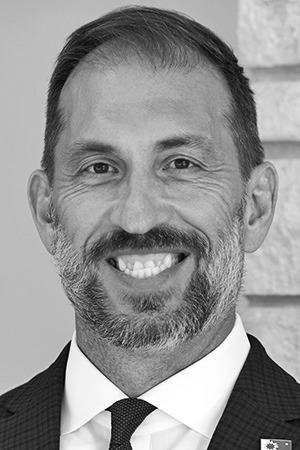BILL F
At over 230 deaths, Helene is now America’s deadliest hurricane since Katrina ripped a hole in the Superdome in 2005. For inland areas supposedly immune from catastrophic storm surges, mountainous “climate havens” like Asheville, North Carolina, were startled to bear the brunt of apocalyptic- like flooding.
On its heels, Hurricane Milton was expected to cause far more damage as it rammed into Florida’s denser population centers.
Sadly, federal assistance is being politicized less than 30 days from a national election and shrouding a longer-term policy issue for those caught in the middle.
Climate migration. As weather disasters continue to intensify, 50 million Americans will leave risky areas (abandonment areas) for less risky areas (climate havens) in the coming decades. In a survey, 30% of Americans cited climate change as a motivator to move in 2024.
With Kansas facing a demographic vice due to historically low birth rates and low retention of younger Kansans, being on the wrong side of the climate migration equation will exacerbate fiscal health and quality of life concerns for many communities. The last time climate, public policy and despair collided here, 2.5 million people migrated from the Dust Bowl.
So, it might be worth asking just how well positioned is Kansas, or your community, for this great climate re-shuffle?
For starters, we couldn’t be any more inland if we tried. A geographical refuge from rising seas, hurricane torrents and wildfires; a free space on your climate haven bingo card.
What about those Kansas winds? Few places are better positioned for renewable energy being the nation’s third largest share of wind-generated electricity. Even Tornado Alley is shifting. Tornado frequency and wickedness have found a new home in the Mississippi and Tennessee River valleys drawn like a magnet to the warming Gulf’s moist air. Ironically, southwest drought conditions help by sending dryer air over Kansas.
On the flip side, droughts currently cover almost half of Kansas (46.4%) due to heat and water shortages. Farm crop yields are projected to decline across the state in coming decades. Unlike some Great Lakes’ climate havens next to the world’s largest freshwater supply, farming practices and climatic changes have transformed our great underground lake (Ogallala Aquifer) into a trickle thus nudging western Kansas closer to climate abandonment.
Nothing makes people move more than flooding. Since 2000, 3.2 million people have left climate abandonment areas due to high flood risk with another 7.5 million projected by 2053.
However, flooding repercussions are acutely local. Research shows when 5-10% of properties in neighborhoods become flood risks, people start to move. This tipping point leads to climate abandonment. This same research shows one-third of Sedgwick County may classify as abandonment areas by 2053, one of the nation’s largest increases.
The bottom line is state/local governments have the ability and responsibility to help their citizenry adapt to climate change, avoid out-migration and advance social equity.
It’s not too late. Last year, Kansas lawmakers finally stopped kicking the can by enforcing conservation measures and approving unprecedented funding as another Dust Bowl looms.
And even as some counties drag their feet, practices such as stormwater bio-retention areas, woodlands restoration, renewable energy ordinances (wind and solar), incentivizing infill development, adopting resilient building codes, expanded tree canopies, floodplain buy-out programs, etc., are already deployed in many parts of Kansas.
Because as they already know, there’s really no such thing as a climate haven.




